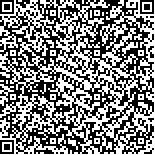| 摘要: |
| [摘要] 目的 分析人类免疫缺陷病毒-1(HIV-1)抗体不确定者的随访结果,为快速诊断和制定治疗方案提供依据。方法 对2019-01~2020-06广西壮族自治区龙潭医院接诊的37例HIV-1抗体不确定者的临床资料进行整理,分析其诊断和治疗经过,归纳其临床特点。结果 37例HIV-1抗体初筛阳性者的首次确认试验结果均判断为不确定,经过追踪随访及核酸检测,证实21例为HIV/AIDS患者,15例为HIV-1以外的其他疾病,1例未复诊。21例HIV/AIDS患者中合并机会性感染11例,无症状10例。经随访,21例HIV/AIDS患者从HIV-1抗体初筛阳性到HIV-1 WB确证阳性时间为70(40.0,152.5)d,从HIV-1抗体初筛阳性到核酸阳性时间10(2,15)d,两者差异有统计学意义(Z=4.318,P=0.000)。21例HIV/AIDS患者CD4+ T淋巴细胞计数和初筛试验S/CO值分别为(191.10±154.55)/mm3、71.93(27.46,150.87),排除HIV-1感染者分别为(422.07±219.68)/mm3、1.53(1.30,1.98),两者差异均有统计学意义(P<0.05)。13例HIV/AIDS患者于该院接受抗逆转录病毒治疗(ART)6个月后,CD4+ T淋巴细胞计数上升至(403.23±237.05)/mm3,病毒抑制率达92.31%。结论 抗体检测仍是诊断HIV-1感染的主要方法,抗体结果不确定给HIV/AIDS诊断增加了难度。对HIV-1抗体结果不确定者应及时予以随访并进行确证试验或核酸检测,可为早诊断、早治疗提供证据。 |
| 关键词: 人类免疫缺陷病毒-1 核酸检测 早期诊断 抗病毒治疗 |
| DOI:10.3969/j.issn.1674-3806.2020.11.07 |
| 分类号:R 512.91 |
| 基金项目:“十三五”艾滋病和病毒性肝炎等重大传染病防治科技重大专项(编号:2017ZX10202101-001-006);广西科学研究与技术开发计划项目(编号:桂科攻1598011-9);广西卫健委重点科研课题(编号:2011067);广西卫健委科研课题(编号:Z2008023) |
|
| Follow-up and treatment analysis of 37 patients with HIV-1 antibody indeterminate |
|
MENG Zhi-hao, LIAO Guang-fu, LAN Ke, et al.
|
|
Department of Infectious Diseases, Longtan Hospital of Guangxi Zhuang Autonomous Region, Liuzhou 545005, China
|
| Abstract: |
| [Abstract] Objective To analyze the follow-up results of patients with human immunodeficiency virus 1(HIV-1) antibody indeterminate, and to provide the basis for rapid diagnosis and treatment. Methods The clinical data of 37 cases of indeterminate HIV-1 antibody treated in Longtan Hospital of Guangxi Zhuang Autonomous Region from January 2019 to June 2020 were summarized, and their diagnosis and treatment were analyzed, and their clinical characteristics were summarized. Results The results of the first confirmed test of 37 HIV-1 antibody screening positive patients were all judged to be uncertain. After follow-up and nucleic acid test, 21 cases were confirmed to be human immunodeficiency virus(HIV)/acquired immune deficiency syndrome(AIDS) patients, and 15 cases were confirmed to be diseases other than HIV-1, and one case did not come to the hospital for further consultation. Among the 21 HIV/AIDS patients, 11 cases were complicated with opportunistic infection and 10 cases were asymptomatic. After follow-up, the time from the initial screening positive for HIV-1 antibody to the confirmation of HIV-1 positive by Western blot(WB) in the 21 HIV/AIDS patients was 70(40.0, 152.5) days, and the time from HIV-1 antibody screening positive to nucleic acid positive was 10(2, 15)days, and the difference was statistically significant between both of them(Z=4.318, P=0.000). The CD4+ T lymphocyte count and S/CO value of initial screening test in the 21 HIV/AIDS patients were(191.10±154.55)/mm3 and 71.93(27.46, 150.87), respectively, and those in the patients excluded from HIV-1 infection were (422.07±219.68)/mm3 and 1.53(1.30, 1.98), respectively. The differences were statistically significant between both of them(P<0.05). The 13 HIV/AIDS patients received antiretroviral therapy(ART) in the hospital. After 6 months of the treatment, the CD4+ T lymphocyte count of the patients increased to (403.23±237.05)/mm3, and the virus inhibition rate was 92.31%. Conclusion Antibody testing is still the main method for the diagnosis of HIV-1 infection, and the uncertainty of antibody results increases the difficulty in the diagnosis of HIV/AIDS. Timely follow-up and confirmatory test or nucleic acid test should be conducted for the uncertainty of HIV-1 antibody results, which can provide evidence for early diagnosis and treatment of HIV-infected patients. |
| Key words: Human immunodeficiency virus 1(HIV-1) Nucleic acid testing Early diagnosis Antiviral treatment |

